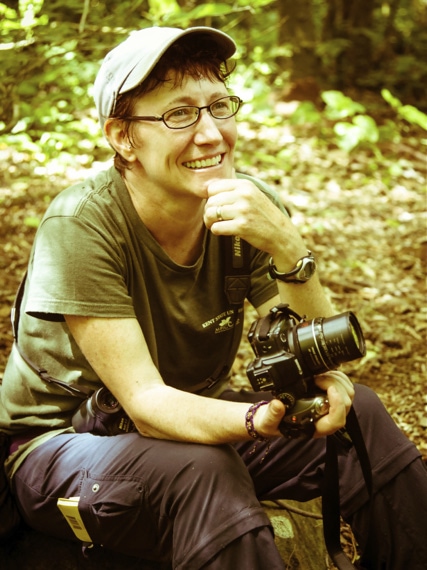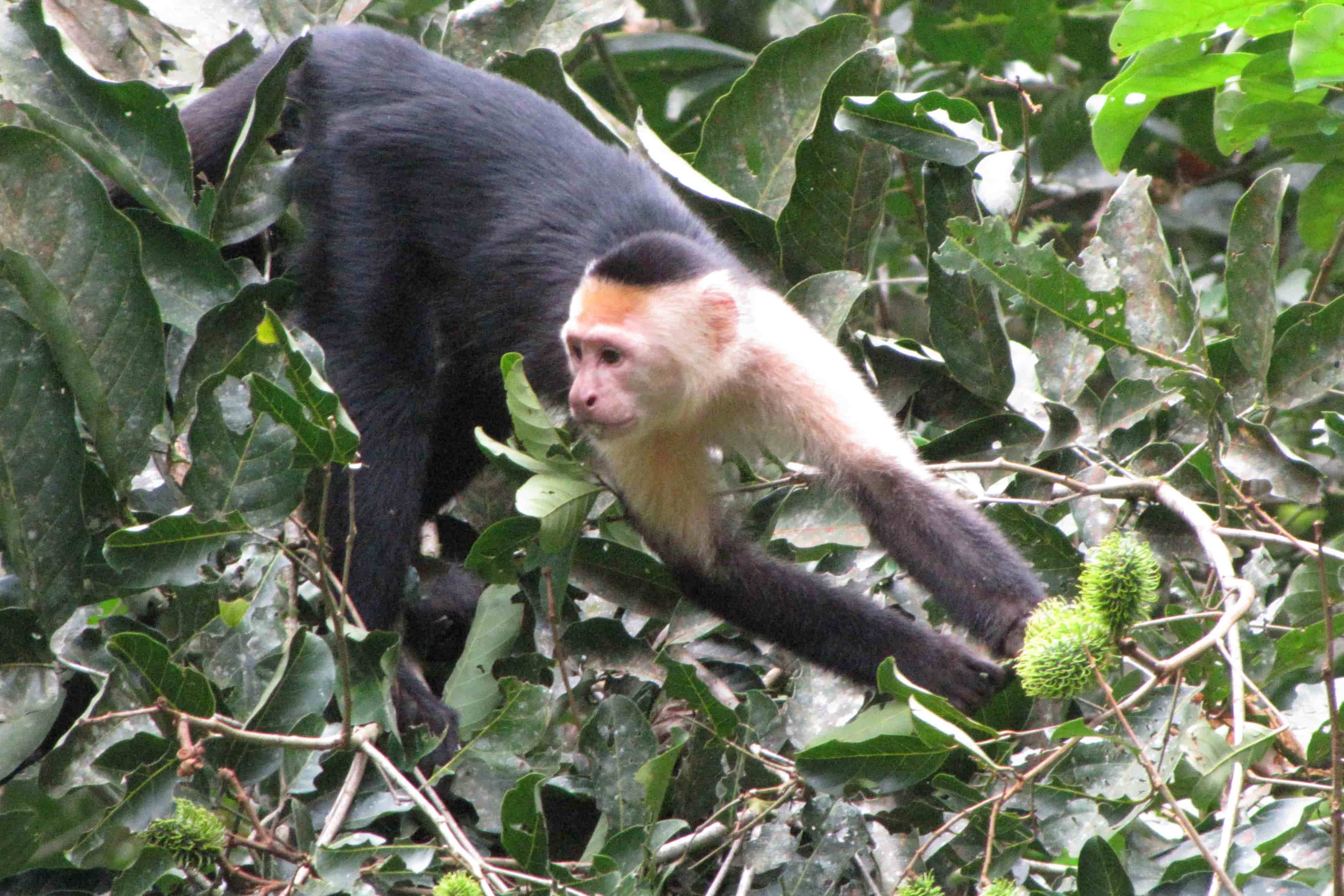SLU Anthropologist Co-Authors Global Study Confirming Dire Decline of Non-Human Primates
Saint Louis University’s lead anthropologist is one of 31 internationally recognized experts on primate conservation who co-authored an article in the journal Science Advances, evaluating the state of the primate population worldwide and calling for urgent action to protect these dwindling species.

Katherine C. MacKinnon, Ph.D., director of the anthropology program and associate professor of anthropology in SLU’s Department of Sociology and Anthropology, and her colleagues in the United States, Europe, Asia, Latin America and Africa, called the situation “dire,” observing that 60 percent of the more than 500 currently-recognized primate species worldwide are threatened with extinction and that 75 percent have declining populations.
“Nonhuman primates … are of central importance to tropical biodiversity and to many ecosystem functions, processes and services,” the journal article begins. “They are our closest living, offering critical insights into human evolution, biology and behaviors and playing important roles in the livelihoods, cultures, and religions of many societies.”
The article goes on to say “Unsustainable human activities are now the major force driving primate species to extinction.”
According to the study, human expansion and production negatively impact non-human primates, specifically lemurs, loris, galagos, tarsiers, monkeys and apes.
The study, which was featured in The New York Times, is comprehensive by design, as it reveals the potential demise of many of the world’s non-human primates at a point when policy changes could rescue them from extinction.
“Now, especially it’s imperative to highlight the conservation of the world’s wild nonhuman primates as they are excellent ambassadors for tapping into people’s fascination with wildlife and nature,” MacKinnon said.
“In these times of climate change deniers and attacks on funding sources for science,” she continued, “the sharply declining primate populations demonstrate a tangible piece of evidence that human-caused change to the planet’s tropical ecosystems is happening at a quickening pace — most notably in many parts of the world where people suffer greatly from poverty and inequality.”
MacKinnon and her colleagues noted that primate populations have declined “as a result of escalating and unsustainable pressures that humans are exerting on primates and their habitats.”
These experts specifically pointed to “extensive forest loss in response to global market demands through the expansion of industrial agriculture,” and large-scale cattle ranching, logging, oil and gas drilling, mining, dam building, and the construction of new road networks for resource extraction in primate range countries.
Beyond sharing a close evolutionary history with humans, primates contribute importantly to the biological and cultural richness and the natural heritage of the countries in which they occur."
Science Advances article
“These complex intersections and inter-connections are crucial to understand if we wish to combat such dire problems that effect humans, wildlife and ecosystems writ-large,” MacKinnon said.
In the article, MacKinnon and her international colleagues “propose a conceptual model to guide the development of global, regional and local approaches to promote primate conservation while at the same time attending to human needs.”
“The goal of this review is not to produce a list of threats,” the article states, “but rather to urge attention to the multiple global and regional anthropogenic factors that imperil primates worldwide and to encourage the development of sustainable and effective solutions that enhance primate survival in the medium and long term.”
There are other issues, as well, which include the tendency to see primates as pets, MacKinnon said. This reality has been true for many primate species, including Capuchin monkeys, which MacKinnon studies in the wild. Commonly known as organ-grinder monkeys, one of these primates was depicted as a pet in the Friends television show.
Currently, the federal government has no ban on primate ownership. According to Born Free USA, a nationally recognized leader regarding issues of non-human primates and other wild and exotic animals, 22 states ban private possession of primates and three states have a partial ban.
At the same time, a total of 25 states have some sort of legislation that allows private ownership under specific regulation. The organization notes that of those 25, “14 allow primates as pets with virtually no oversight,” and another 11 require a license or permit for some or all primates.
According to MacKinnon and her colleagues, this legislation allowing and regulating ownership has normalized these animals as part of the pet industry. In many parts of the world, providing primates as pets requires capturing them from the wild or obtaining them from private breeders. Here in the U.S., wild primates cannot be legally imported, but they are in other parts of the world.
Removing primates from the wild for private owners has furthered the decline declines of these animals in their native settings, including in Central and South America, where MacKinnon has conducted field studies since 1992.
MacKinnon’s field-based primate research focuses on social behavior, behavioral ecology and conservation, as well as development of wild infant and juvenile Capuchin monkeys. She has observed the behavior of primates in Costa Rica, Nicaragua and Panama in Central America, Suriname in South America, Bali in Indonesia, and Zambia in southern Africa.
“I am interested in social interactions between infants and juveniles particularly with adult male primates,” MacKinnon said. “I also study age-class differences in foraging behavior in Capuchin monkeys.”
Primates are a central part of their ecosystems, she explains, and must be saved from extinction. Information is the key to understanding and helping resolve issues of extinction, she said.
“Beyond sharing a close evolutionary history with humans, primates contribute importantly to the biological and cultural richness and the natural heritage of the countries in which they occur," the study notes. “Many primates play key roles in ecosystem dynamics and sustainability and are central figures in local and regional traditional knowledge, folklore, history, and even economies.”
The study offers several ways to address the need for conservation to save these primates from extinction. Specifically, it suggests “Solutions to the challenge of primate conservation must include reducing human birth rates and population growth, improving health, reducing poverty and gender biases in education, developing sustainable land-use initiatives, and preserving traditional livelihoods.”
The study puts it plainly: “There is no single solution to this global problem.”
MacKinnon suggests there are several actions consumers can take to help reduce the human footprint that has led to this problem:
- Do not see these animals as pets
- Purchase any product from morally responsible companies that do not infringe on wildlife and which contribute to sustainability efforts
- Try to purchase locally rather than from far distances, where fuel and other resources must be used to fulfill project orders
- Fight against science education slashing
“Consumers are becoming increasingly aware, particularly in this era of globalization,” she said. “They are thinking about where something is made, how it is shipped, how far it travels. This is a concern we must all share.”


















